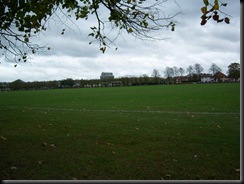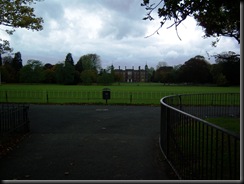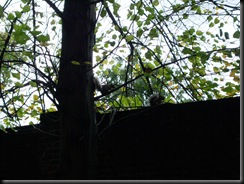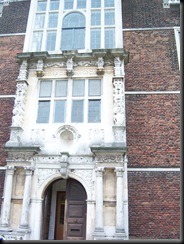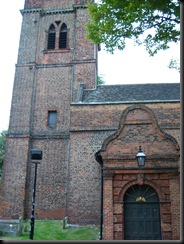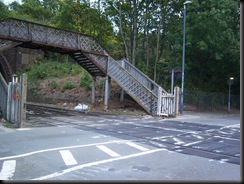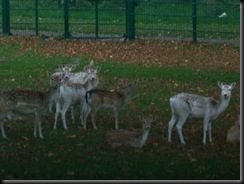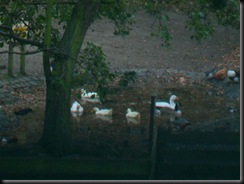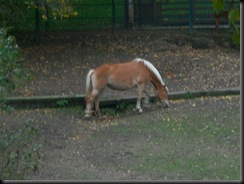On Saturday afternoon, after spending most of the day at the Lord Mayor's Show (and associated festivities) I decided that my best route back to South London was down the Jubilee Line, and the best way to pick up the Jubilee Line would be at London Bridge which is only a short walk across the Thames from the City.
The South Bank of the Thames is the lesser known part of London for most tourists. Although it boasts several major rail terminus stations most of the tourist attractions are found on the North Bank of the river (being the older part of London).
My journey from St Paul's began by crossing the river on the famous (or should that be infamous) Millennium Bridge also known as the Wobbly Bridge - due to the fact that when it first opened some irregularities of construction meant that the bridge wobbled alarmingly as people walked across it.
The Millennium Bridge
The first thing you see as you cross the Millennium bridge and arrive of the South Bank is the Tate Modern, this disused power station houses a number of permanent exhibitions as well as special displays of modern art.
The Tate Modern
A little further along the riverbank (amongst the pubs) is the recreation of Shakespeare's Globe Theatre. Although the 2008 Theatre season is now over there are still other events and theatre tours on offer.
The Globe Theatre
This area of London (away from the river) has a large amount of accommodation under railway arches (there are a lot of railways leading out of the centre of town into the Kent and Surrey countryside).
Under the arches
Near some of these you will find The Clink Prison Museum. This would appear to be one of London's lesser known attractions and at £5 one of the more affordable. Definitely on my to do list!
A little further along you come across a small dock just off the river. Here is a recreation of Sir Francis Drake's galleon the Golden Hinde. This replica has travelled all over the globe and now is permanently on display in London.
The Golden Hinde
The next landmark is Southwark Cathedral. This magnificent Cathedral apparently has an extremely small parish, being located amongst offices and other industry.
Southwark Cathedral
To the south of Southwark Cathedral amongst the railway lines in Borough Market. This food market occupies a site on which there has been a market for over 200 years.
Borough Market
Nearly back at London Bridge now. Right by the station is the London Bridge Experience. Here you can find the history of London Bridge through the ages. Many years ago I visited a similar exhibit near the Tower of London. At around £15 this is another affordable attraction and one I'll be visiting when I'm next in the area (and it isn't a wet Saturday late afternoon!).
Under the arches (again)
If you still have time left it's a short walk from here up to the mainline station and London Bridge.


